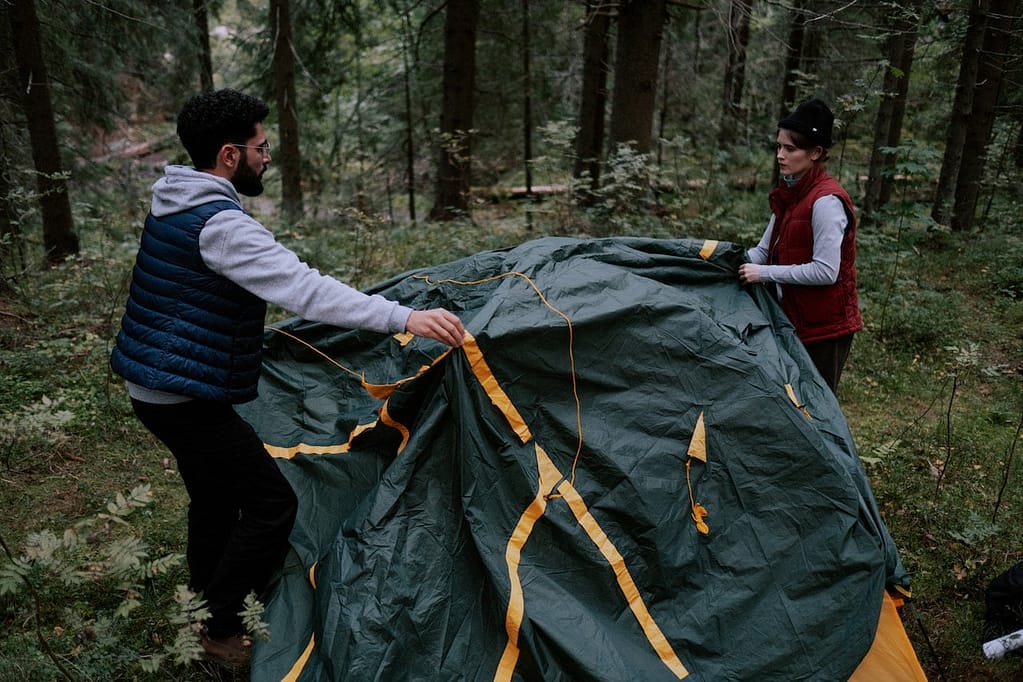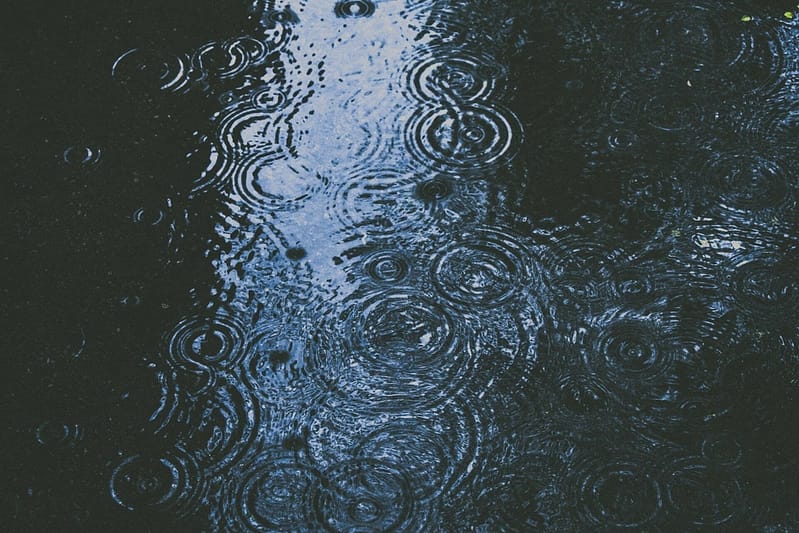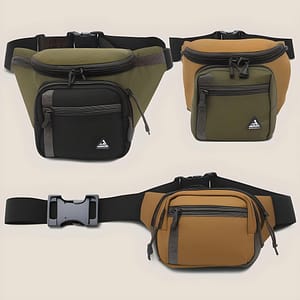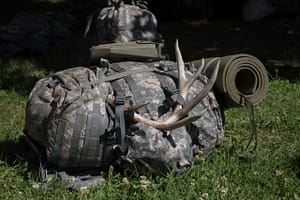The essence of camping is nature. Its beauty, the unique experiences that can only be experienced in camping and a brake it gives us in the face of the routine daily life of home, work and some Netflix at 10pm (i personally spend more time on Netflix looking for what to watch than actually watching something). But nature forces us to deal with dirt and mud when there is no access to a shower, lack of lighting when there is no electricity and in this case, rain when there is no roof. In this comprehensive guide, i will walk you through everything you need to know about camping in the rain. From preparing for wet conditions, camping in the rain hacks, to staying safe and enjoying activities, we’ve got you covered every step of the way.
Preparing for Rainy Camping
1. Check the weather forecast to anticipate rain and plan accordingly: Research multiple reliable weather sources to get the most accurate forecast for your camping trip. Pay attention to local forecasts and radar updates, as conditions can vary greatly even within a small area. When checking the forecast, consider both the duration and intensity of rain to determine if it is safe and feasible to go camping in potentially wet conditions.
2. Pack waterproof clothing: Bring a tarp or tent with good rain protection. Ensure you have appropriate clothing and gear to keep yourself dry in wet conditions. Invest in a reliable waterproof jacket, pants, and footwear, as well as quick-drying materials for your clothes and sleeping bag. These precautions will help you stay comfortable throughout your camping adventure even when faced with inclement weather. Pack waterproof jackets, pants, and footwear to stay dry in the rain. It’s also wise to bring extra clothes in case they get wet or muddy. For added protection from the elements, make sure to carry tarps, tents with good rain resistance, and ground sheets.
Setting Up Camp in the Rain

Setting up camp in the rain can be a challenging task, but with the right preparation and equipment, you can ensure a dry and comfortable experience. When finding shelter, look for areas with natural cover such as trees or rocks to provide some protection from the rain. Setting up a waterproof tent is vital; make sure all seams are properly sealed, and use a groundsheet to prevent water seepage from below. Creating a rainproof campsite involves setting up tarps or awnings over your cooking area and storage space to keep them dry. Additionally, consider using waterproof bags or containers for your belongings to avoid any potential damage caused by moisture.
Finding shelter
Identifying natural shelters can provide crucial protection from the rain during camping trips. Look for caves, overhangs, or large trees that can offer a dry and safe refuge. Utilizing tarps and rainflys is another effective way to stay dry in wet weather. Set up these waterproof coverings over your tent or as standalone shelters to ensure maximum protection against the rain. Locating higher ground will also help you avoid potential flooding and keep your campsite drier.
- Identify natural shelters such as caves, overhangs, or large trees.
- Use tarps and rainflys to create waterproof coverings for your tent.
- Locate higher ground to prevent flooding at your campsite.
Setting up a waterproof tent

Choosing a tent with good rain resistance is crucial when setting up camp in wet conditions. Look for tents made from waterproof materials like nylon or polyester, and ensure the seams are properly sealed to prevent any water leakage. Additionally, opt for a tent with a rainfly that extends all the way down to the ground for maximum protection against rainfall.
Once you’ve selected your suitable tent, it’s essential to stake and guy it out properly. Securely anchor each corner of the tent using sturdy stakes and attach guylines at various points along the sides to provide additional stability during windy weather. This will help prevent water from pooling on top of your tent and potentially causing leaks.
To further protect your tent from moisture seeping in through the ground, use a groundsheet or tarp underneath it. This extra layer acts as a barrier between your tent floor and damp soil, reducing condensation buildup inside the tent while also preventing damage caused by sharp objects or rough surfaces.
With these tips in mind, you can confidently set up a waterproof tent that will keep you dry and comfortable throughout your camping trip even when faced with rainy weather conditions.
Creating a rainproof campsite
Building proper drainage channels around your campsite is crucial to keep it rainproof. Dig trenches along the perimeter of the site to direct water away from the camping area, preventing pooling and potential flooding. These channels should be angled downhill for efficient water flow and lined with gravel or rocks to promote drainage.
To further ensure a rainproof campsite, avoid setting up in low-lying areas that are prone to flooding. Choose higher ground whenever possible, as it provides natural protection against heavy rainfall. By avoiding these vulnerable spots, you can reduce the risk of your campsite being inundated with water.
When it comes to protecting your gear from the rain, using waterproof storage containers is essential. Invest in quality containers that have a tight seal and are designed specifically for outdoor use. Store clothes, electronics, food supplies, and other valuable items inside these containers to prevent them from getting wet and potentially damaged during rainy weather conditions.
Additionally, Consider these two main points when choosing your camping spot:
- Look for elevated areas or slopes
- Avoid setting up camp near bodies of water
Staying Dry and Comfortable
Wearing the right clothing is crucial when camping in the rain. Go for waterproof and breathable materials like Gore-Tex or nylon to keep you dry. Layer your clothing to trap heat without sacrificing comfort.
Using tarps and waterproof covers can provide an extra layer of protection against the rain. Place a tarp over your tent, ensuring it’s tight and secure, to prevent water from seeping through. Additionally, use a groundsheet or footprint under your tent for added insulation and moisture resistance.
Managing moisture inside the tent is essential for staying comfortable during wet camping trips. Keep wet items separate from dry ones by using designated storage bags or compartments. Ventilate your tent regularly to reduce condensation buildup, and consider bringing along a portable dehumidifier if necessary.
Wearing the right clothing
Waterproof boots and rain gear are essential for camping in the rain. They provide protection against wet conditions and keep your feet dry. Moisture-wicking base layers help to regulate body temperature by wicking away sweat from the skin, keeping you comfortable during physical activities. Quick-drying pants or shorts are ideal for rainy weather as they dry quickly when exposed to moisture, preventing discomfort and chafing.
Using tarps and waterproof covers

Pitching a rain fly over the tent is essential for camping in the rain. It provides an additional layer of protection against water entering the tent and keeps you dry throughout your trip. Additionally, creating a vestibule using tarps is a great way to keep wet gear separate from your sleeping area. This prevents moisture from spreading and maintains a comfortable environment inside the tent. Lastly, securing tarps as additional shelter can provide extra space for cooking or storing items during inclement weather, ensuring that you have ample room to move around even when it’s raining outside.
Managing moisture inside the tent
Properly ventilating the tent is essential for reducing condensation. By opening windows or vents, air can circulate and prevent moisture buildup. Additionally, using a groundsheet or footprint under your tent can help prevent ground moisture from seeping in and causing dampness inside.
To keep the inside of your tent dry, it’s important to dry wet clothing outside of the sleeping area. Hanging them up on a clothesline or tree branch will allow them to air out and avoid adding additional moisture to the confined space.
Fire and Cooking in the Rain
Building a fire in the rain can be challenging, but with proper preparation and techniques, it is still possible. Start by finding dry kindling and using a waterproof container to store them. Create a sheltered area for your fire pit using tarps or natural coverings to protect it from rainwater.
When cooking in wet conditions, opt for quick and easy meals that require minimal prep work. Use portable stoves or charcoal grills with built-in covers to shield your cooking area from raindrops. Keep food covered at all times to prevent water from seeping in and spoiling your meal.
Remember that water contamination is a common issue during rainy camping trips. Always collect water from reliable sources such as flowing streams or use purification tablets if necessary. Avoid stagnant pools of water as they may contain harmful bacteria.
By following these tips for building fires and cooking in the rain while being mindful of potential water contamination, you can have an enjoyable camping experience even when the weather doesn’t cooperate.
Building a rainproof fire
Choosing the right location is crucial when building a rainproof fire. Look for areas with natural cover, such as overhanging trees or large rocks, to shield your fire from rain. Avoid low-lying areas that may collect water and become soggy.
Gathering dry kindling and firewood is essential for successfully starting a fire in wet conditions. Search for fallen branches and twigs under tree canopies or on higher ground where they are less likely to be dampened by rain. Aim to collect more than you think you need, as wet wood takes longer to burn.
Using waterproof matches or lighters will significantly increase your chances of starting a fire in the rain. Ensure that these tools are kept in waterproof containers, such as ziplock bags or durable match cases, to protect them from moisture. In addition, consider carrying some backup options like stormproof matches or a magnesium starter in case your primary method fails.
Cooking in wet conditions
Investing in a reliable camping stove is crucial when cooking in wet conditions. Look for stoves that have wind-resistant features and are made of durable materials to withstand rain showers. Having a dependable stove will ensure that you can cook your meals efficiently, regardless of the weather.
Using windshields to protect the flame is another useful tip for cooking in wet conditions. Windy and rainy weather can easily extinguish flames, making it difficult to cook outdoors. By using a windshield or creating a barrier around your stove, you can shield the flame from gusts of wind and maintain consistent heat for cooking.
When it comes to preparing meals in wet conditions, opt for dishes that require minimal water usage. Cooking with less water not only saves on resources but also reduces the risk of contamination from rainwater. Focus on one-pot recipes or options like stir-fries that don’t rely heavily on boiling water. This way, you’ll be able to enjoy delicious meals even when faced with challenging weather conditions while camping.
Preventing water contamination
Properly sealing food and water containers is essential for preventing water contamination during camping in the rain. Make sure that lids are tightly sealed and bottles are securely closed to avoid any potential leaks or exposure to outside elements.
Boiling or purifying water before consumption is a crucial step in safeguarding against waterborne illnesses while camping in rainy conditions. Even if the source of water seems clean, it’s always recommended to boil it for at least one minute or use an appropriate water purification method such as filtration or chemical treatment.
Using waterproof bags for storage can provide an extra layer of protection against moisture and prevent cross-contamination. Store items like clothes, electronics, and important documents in waterproof bags to ensure they stay dry throughout your camping trip, reducing the risk of mold growth or damage from dampness.
Staying Safe in the Rain
1. Dress appropriately: When camping in the rain, it’s crucial to dress in waterproof layers to prevent moisture from seeping through and causing discomfort or hypothermia. Invest in a good quality rain jacket, pants, and waterproof boots to keep yourself dry and warm.
2. Be cautious on slippery terrain: The rain can make trails and campsites muddy and slippery, increasing the risk of accidents or injuries. Take slow and deliberate steps, using trekking poles for stability if necessary. Avoid steep slopes or areas prone to landslides during heavy rainfall.
Avoiding lightning and thunderstorms
Monitoring weather forecasts is essential when camping in the rain to avoid lightning and thunderstorms. Stay informed about any approaching storms by checking reliable weather sources regularly.
Seek shelter in a safe location as soon as you hear thunder or see lightning. It’s important to protect yourself from potential harm during a storm.
Avoid open areas and tall objects such as trees or metal structures that can attract lightning strikes. Instead, find a low-lying area away from bodies of water where you can wait out the storm safely.
Here, you can find a guide to safety and preparation for camping in thunderstorm.
Dealing with slippery and muddy terrain
Wearing appropriate footwear is crucial when navigating slippery and muddy terrain during camping trips in the rain. Opt for sturdy hiking boots with good traction to minimize the risk of slips and falls.
Using trekking poles not only helps to improve stability but also provides additional support on slippery surfaces. By planting them firmly into the ground, you can distribute weight more evenly and maintain balance while traversing challenging terrains.
When setting up camp in wet conditions, it’s wise to choose higher ground whenever possible. This reduces the likelihood of water pooling around your tent and keeps your belongings dry throughout the night, ensuring a comfortable camping experience even in rainy weather.
Protecting against hypothermia
Protecting against hypothermia is essential when camping in the rain. Here are some key tips to stay warm and safe:
- Layered clothing helps trap heat, so wear a base layer, insulating mid-layer, and waterproof outer layer.
- Use waterproof gear like jackets, pants, and boots to keep yourself dry.
- Building a solid campfire provides warmth but ensure it’s safely constructed away from flammable materials.
By following these precautions, you can mitigate the risk of hypothermia while enjoying your rainy camping adventure.
Enjoying Activities in the Rain
When camping in the rain, it’s important to have a plan for indoor activities. Engage in board games or card games with your fellow campers to keep everyone entertained and build camaraderie. Alternatively, retreat into the world of literature by reading books or telling stories that transport you to different places and times.
Don’t let rainy weather dampen your exploration spirit! Take advantage of the atmospheric conditions by venturing out on rainy trails and discovering stunning landscapes transformed by rainfall. Capture breathtaking photos, admire lush greenery, and experience nature in a unique way during these wet adventures.
Playing games indoors
Board games, card games, and puzzles are excellent options for indoor entertainment while camping in the rain. Board games provide a fun and interactive experience for all ages, allowing you to challenge your family and friends with strategic gameplay. Card games offer versatility and can be easily adapted to various group sizes, making them ideal for playing indoors. Puzzles provide both mental stimulation and relaxation as you piece together beautiful images or solve intricate designs.
Reading and storytelling
Book club discussions, storytelling circles, and campfire tales are all perfect activities to engage in when camping in the rain. Book club discussions allow for lively conversations about favorite books and authors, while storytelling circles create a sense of enchantment as participants take turns sharing captivating tales. And what better way to spend a rainy evening than gathered around a crackling fire, weaving spooky campfire tales that send shivers down your spine?
- Engage in thought-provoking book club discussions
- Create magical moments with storytelling circles
- Embrace the thrill of spooky campfire tales
Exploring rainy trails and landscapes
Nature photography is a perfect activity to engage in while exploring rainy trails and landscapes. Capture the beauty of rain-soaked flora and fauna, creating stunning images that showcase the unique atmosphere of these wet environments.
- Experiment with close-up shots of raindrops on leaves
- Look for reflections in puddles for interesting compositions
- Use a waterproof camera or protective gear to protect your equipment
Embark on a ‘Rain Walk’ scavenger hunt during your exploration of rainy trails and landscapes. Create a list of items to find, such as different types of leaves, animal tracks in the mud, or colorful mushrooms growing on trees. This interactive game adds excitement and adventure to your outdoor experience.
- Identify various types of fungi thriving in damp conditions
- Discover hidden waterfalls or streams along the trail
- Collect fallen leaves with vibrant colors as souvenirs
Observe wildlife in their natural habitats even when it’s raining. Many animals are more active during this weather condition, making it an excellent opportunity for wildlife enthusiasts.
- Spot birds bathing and preening themselves under rainfall
- Watch amphibians like frogs and salamanders hunting for food near water sources
- Look out for deer grazing peacefully amidst gentle showers
Breaking Down Camp
When it comes to packing up a wet tent, the key is patience and thoroughness. Start by carefully wiping down the exterior with a towel to remove excess moisture. Then, disassemble the tent pole by pole, making sure to shake off any water before folding them up. Once everything is packed away, be sure to air out your tent as soon as possible to prevent mildew.
Cleaning and drying gear is essential for maintaining its longevity. Begin by rinsing off any mud or dirt from your camping equipment using clean water. Use a brush or sponge with mild soap if necessary. Afterward, dry everything thoroughly before storing them away in waterproof bags or containers.
Leaving no trace of your campsite should be every camper’s top priority. Collect all trash and dispose of it properly in designated bins or take it with you if none are available nearby. Remove any signs of established fire pits and scatter ashes responsibly while ensuring that there are no leftover embers that can potentially start a wildfire.
Packing up a wet tent
Shaking off excess water is crucial when packing up a wet tent. Gently but firmly shake the tent to remove as much water as possible before disassembling it.
To minimize moisture, roll the tent tightly and secure it with straps or bungee cords. This will help prevent any remaining water from seeping into other gear during transport.
Using waterproof bags for storage adds an extra layer of protection against dampness. Pack your rolled-up tent in a waterproof bag to ensure that no moisture can penetrate and damage your equipment while in transit or storage.
Cleaning and drying gear
Wiping down cooking equipment is essential after a rainy camping trip. Use a clean cloth or paper towel to remove any moisture and prevent rusting or mold growth. Air-drying clothes before packing them away will help prevent musty odors and mildew from forming in your gear. Hang them up in a well-ventilated area until completely dry. Inspecting and cleaning muddy boots is crucial to maintain their longevity. Remove any dirt or debris with a brush, then wipe them down with warm soapy water using a sponge or cloth. Allow the boots to air dry naturally, avoiding direct heat sources that could damage the material.
In the face of rain-soaked challenges, camping takes on a new dimension of adventure and resilience. As we wrap up this comprehensive guide on camping in the rain, remember that nature’s beauty can be just as awe-inspiring under the veil of rainfall. The pitter-patter of raindrops on a tent, the earthy scent of wet soil, and the camaraderie forged around a campfire despite the downpour – these are the memories that define a truly unforgettable camping experience.





